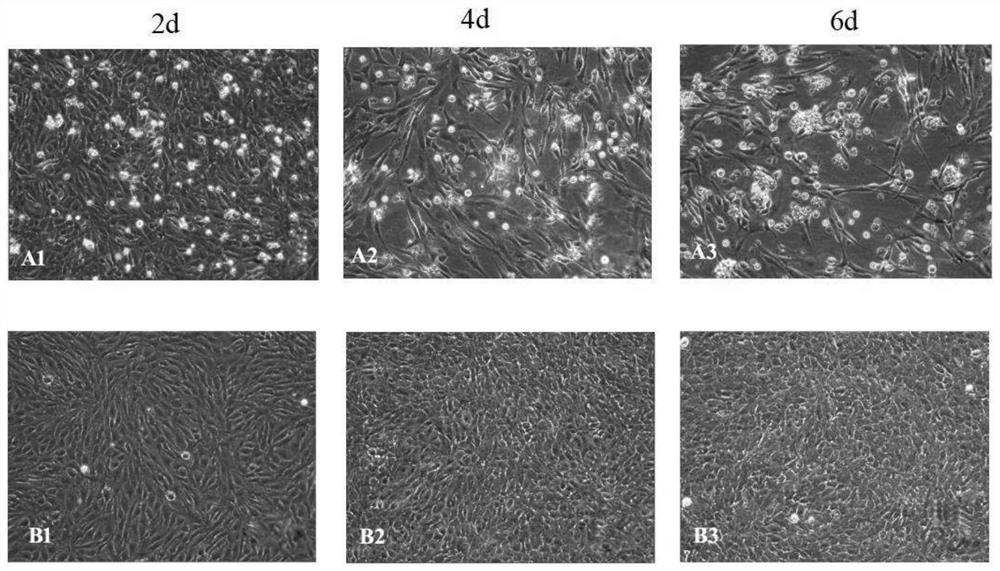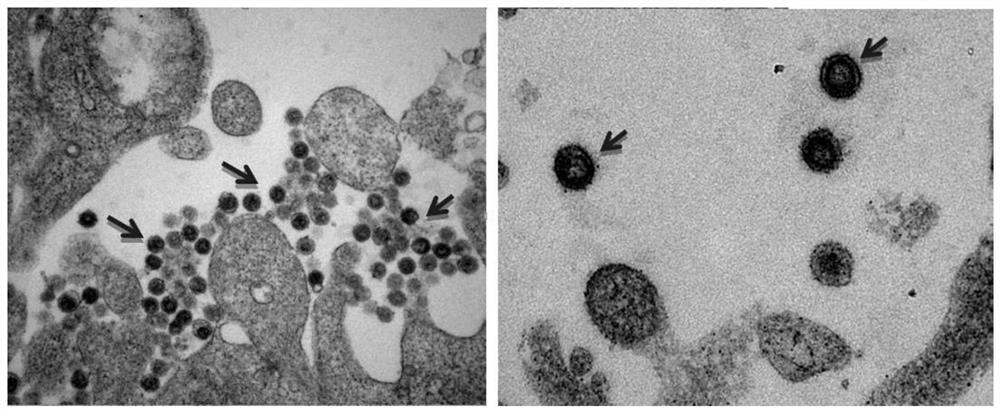A virulent strain of tilapia lake virus and its rpa detection primer and method
A technology for tilapia and virus strains, applied in the direction of biochemical equipment and methods, methods based on microorganisms, viruses, etc., can solve problems that affect the on-site diagnosis of Luohu virus disease, pathogen monitoring, epidemiological investigation and epidemic treatment. Problems such as drug or vaccine disease, specificity and sensitivity are different, to achieve the effect of ensuring high specificity, rapid and accurate analysis and detection, and fast and simple methods
- Summary
- Abstract
- Description
- Claims
- Application Information
AI Technical Summary
Problems solved by technology
Method used
Image
Examples
Embodiment 1
[0035] A tilapia lake virus GD1710 isolation and whole genome sequence determination, the main process is as follows:
[0036] (1) Under aseptic conditions, take the liver, kidney, and spleen of tilapia infected with tilapia lake virus, add them to sterilized PBS containing double antibodies to make a 1:1 homogenate, and store them at -20 After freezing and thawing three times at ℃, the tissue homogenate was centrifuged at 2000rpm / min for 10min to take the supernatant, then centrifuged at 5000rpm / min for 10min to take the supernatant, and finally centrifuged at 10000rpm / min to take the supernatant and passed it through a filter membrane with a pore size of 0.22μm. Sterilize by filtering through a pore filter, and inoculate a monolayer of tilapia brain cells (TiB cells) at a density of 80%-90%. Adsorb at room temperature for 1 hour, discard the virus solution, add maintenance solution (M199 containing 3% FBS) equal to the culture solution, incubate at a constant temperature of ...
Embodiment 2
[0061] Embodiment 2: The regression infection test of TiLV-GD1710 new isolated strain
[0062] The virus solution of TiLV-GD1710 cells passed to the third generation was treated with a concentration of 1.8x10 4 TCID50 / mL for different sizes
[0063] Nile tilapia, Egyptian red tilapia, Olia tilapia and Mozambique tilapia were intraperitoneally injected, and the cumulative mortality after 2 weeks was counted (see Table 1).
[0064] It can be seen from the table that the TiLV-GD1710 virus strain prepared by the present invention has strong toxicity to different species of tilapia and fish of different sizes. After artificially infecting TiLV-GD1710 prepared by the present invention, most tilapias have obvious abdominal swelling and a large amount of ascites in the abdominal cavity; a few fish are particularly emaciated, slight bleeding spots appear on the surface of the fish body, and the intestinal tract is full of yellow transparent fluid .
[0065] Using TaqMan qPCR to stu...
Embodiment 3
[0068] Embodiment 3: RPA amplification primer design
[0069] Based on the S2 gene segment of Luohu virus GD1710 strain (shown in SEQ ID NO.1-10), the present invention designs RPA detection primers of Luohu virus, and the nucleotide sequence is as follows:
[0070] Upstream primer TiLV-S2-F: 5'-GGCGGCTCTAGGGTACA- 3' (SEQ ID NO. 11)
[0071] Downstream primer TiLV-S2-R: 5'-CGAAGTGTTGGAACCCGTCAT- 3' (SEQ ID NO.12)
PUM
| Property | Measurement | Unit |
|---|---|---|
| diameter | aaaaa | aaaaa |
Abstract
Description
Claims
Application Information
 Login to View More
Login to View More - R&D
- Intellectual Property
- Life Sciences
- Materials
- Tech Scout
- Unparalleled Data Quality
- Higher Quality Content
- 60% Fewer Hallucinations
Browse by: Latest US Patents, China's latest patents, Technical Efficacy Thesaurus, Application Domain, Technology Topic, Popular Technical Reports.
© 2025 PatSnap. All rights reserved.Legal|Privacy policy|Modern Slavery Act Transparency Statement|Sitemap|About US| Contact US: help@patsnap.com



